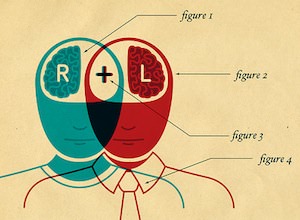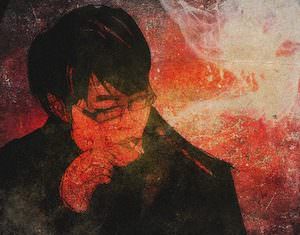Our God of Imagination
In his latest "Easy Chair" column, Harper's Magazine contributor Thomas Frank sarcastically eviscerates the business class' most prized literary genre: creativity.
In his latest “Easy Chair” column, Harper’s Magazine contributor Thomas Frank sarcastically eviscerates the business class’ most prized literary genre: creativity.
In a reading of the disgraced former New Yorker writer Jonah Lehrer’s book “Imagine: How Creativity Works,” Frank shows how a few tales of innovation are recycled among the genre’s mythmakers: Procter & Gamble’s development of the Swiffer, Bob Dylan’s recording of “Like a Rolling Stone” and 3M’s invention of the Post-it Note. So too are the group’s favorite heroes: Einstein, Gandhi, Picasso, Warhol and the Beatles.
The recurrence of these same stories and figures among the self-styled experts reveals that “Those who urge us to ‘think different’ … almost never do so themselves.”
“Year after year, new installments in this unchanging genre are produced and consumed,” he continues. “Creativity, they all tell us, is too important to be left to the creative. Our prosperity depends on it. And by dint of careful study and the hardest science — by, say, sliding a jazz pianist’s head into an MRI machine — we can crack the code of creativity and unleash its moneymaking power.”
Unoriginality being the rule, Lehrer has his predecessors. An earlier book called “The Rise of the Creative Class” by American urban studies theorist Richard Florida alleged the primacy of creativity’s value to the marketplace. Creative people were society’s “dominant class,” the members of which were to be courted by social scientists, CEOs and financial experts. Thus could creativity fulfill its true role: bolstering and enhancing industry and its profits.
Never mind the fact that “newspapers, magazines, universities and record labels,” the institutions that made the lives of creative people possible, “were then entering a period of disastrous decline,” Frank writes. Artists, musicians, writers and intellectuals were in fact shunned by society. In the reality that Frank knew from years of experience, “for all its reverential talk about the rebel and the box breaker, society had no interest in new ideas at all unless they reinforced favorite theories or could be monetized in some obvious way.”
What to make of the fact that books like Florida’s and Lehrer’s reflect so little that is true about the lives and experiences of actual creative workers? This: Creativity literature isn’t about those people in the first place. It is about something completely different.
— Posted by Alexander Reed Kelly.
Your support matters…Thomas Frank in Harper’s Magazine:
… the banality, the familiar examples, the failure to appreciate what was actually happening to creative people in the present time. This was not science, despite the technological gloss applied by writers like Jonah Lehrer. It was a literature of superstition, in which everything always worked out and the good guys always triumphed and the right inventions always came along in the nick of time. In Steven Johnson’s Where Good Ideas Come From (2010), the creative epiphany itself becomes a kind of heroic character, helping out clueless humanity wherever necessary:
Good ideas may not want to be free, but they do want to connect, fuse, recombine. They want to reinvent themselves by crossing conceptual borders. They want to complete each other as much as they want to compete.
And what was the true object of this superstitious stuff? A final clue came from Creativity: Flow and the Psychology of Discovery and Invention (1996), in which Mihaly Csikszentmihalyi acknowledges that, far from being an act of individual inspiration, what we call creativity is simply an expression of professional consensus. Using Vincent van Gogh as an example, the author declares that the artist’s “creativity came into being when a sufficient number of art experts felt that his paintings had something important to contribute to the domain of art.” Innovation, that is, exists only when the correctly credentialed hivemind agrees that it does. And “without such a response,” the author continues, “van Gogh would have remained what he was, a disturbed man who painted strange canvases.” What determines “creativity,” in other words, is the very faction it’s supposedly rebelling against: established expertise.[3]
Consider, then, the narrative daisy chain that makes up the literature of creativity. It is the story of brilliant people, often in the arts or humanities, who are studied by other brilliant people, often in the sciences, finance, or marketing. The readership is made up of us — members of the professional-managerial class — each of whom harbors a powerful suspicion that he or she is pretty brilliant as well. What your correspondent realized, relaxing there in his tub one day, was that the real subject of this literature was the professional-managerial audience itself, whose members hear clear, sweet reason when they listen to NPR and think they’re in the presence of something profound when they watch some billionaire give a TED talk. And what this complacent literature purrs into their ears is that creativity is their property, their competitive advantage, their class virtue. Creativity is what they bring to the national economic effort, these books reassure them — and it’s also the benevolent doctrine under which they rightly rule the world.
Independent journalism is under threat and overshadowed by heavily funded mainstream media.
You can help level the playing field. Become a member.
Your tax-deductible contribution keeps us digging beneath the headlines to give you thought-provoking, investigative reporting and analysis that unearths what's really happening- without compromise.
Give today to support our courageous, independent journalists.








You need to be a supporter to comment.
There are currently no responses to this article.
Be the first to respond.